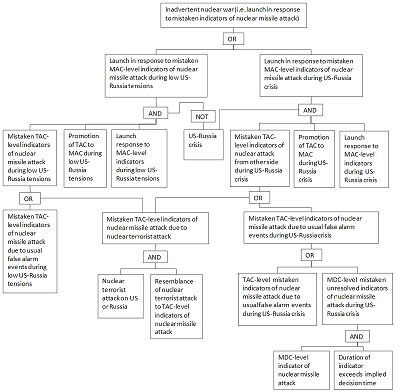GCRI has another new academic paper out. Analyzing and reducing the risks of inadvertent nuclear war between the United States and Russia, by Tony Barrett, Seth Baum, and Kelly Hostetler, has been accepted for publication in Science and Global Security.
The paper discusses the possibility of US-Russia nuclear war occurring when one country mistakenly concludes that a false alarm is real and launches nuclear weapons in what it believes is a counterattack. Inadvertent US-Russia nuclear war has come close to happening before, even since the end of the Cold War, such as the 1995 Norwegian rocket incident. Thus despite the end of the Cold War, the risk remains. The paper analyzes the risk of inadvertent US-Russia nuclear war using a detailed fault tree model, which examines the steps within different scenarios that could result in inadvertent US-Russia nuclear war.
A full non-technical summary can be found here. I will say this has been a very difficult paper to summarize. For example, it’s hard to summarize model results about the annual probability of inadvertent US-Russia nuclear war in a way that would avoid anchoring bias, i.e. giving you a false sense of precision about the portion of the results we report. Overall, the paper covers a lot of ground, and does so in a sophisticated technical fashion. Tony Barrett gets the bulk of the credit for that. It turns out there’s a reason why he’s GCRI’s Director of Research. I’m just happy to have had the chance to be part of the project. Kelly Hostetler, who worked on this as a GCRI Research Assistant during 2011-2012, also provided excellent support, in particular for the very thorough literature review used to identify model parameters. To give you a sense for some of the detail, here’s a condensed overview of the fault tree model (click for full version):








